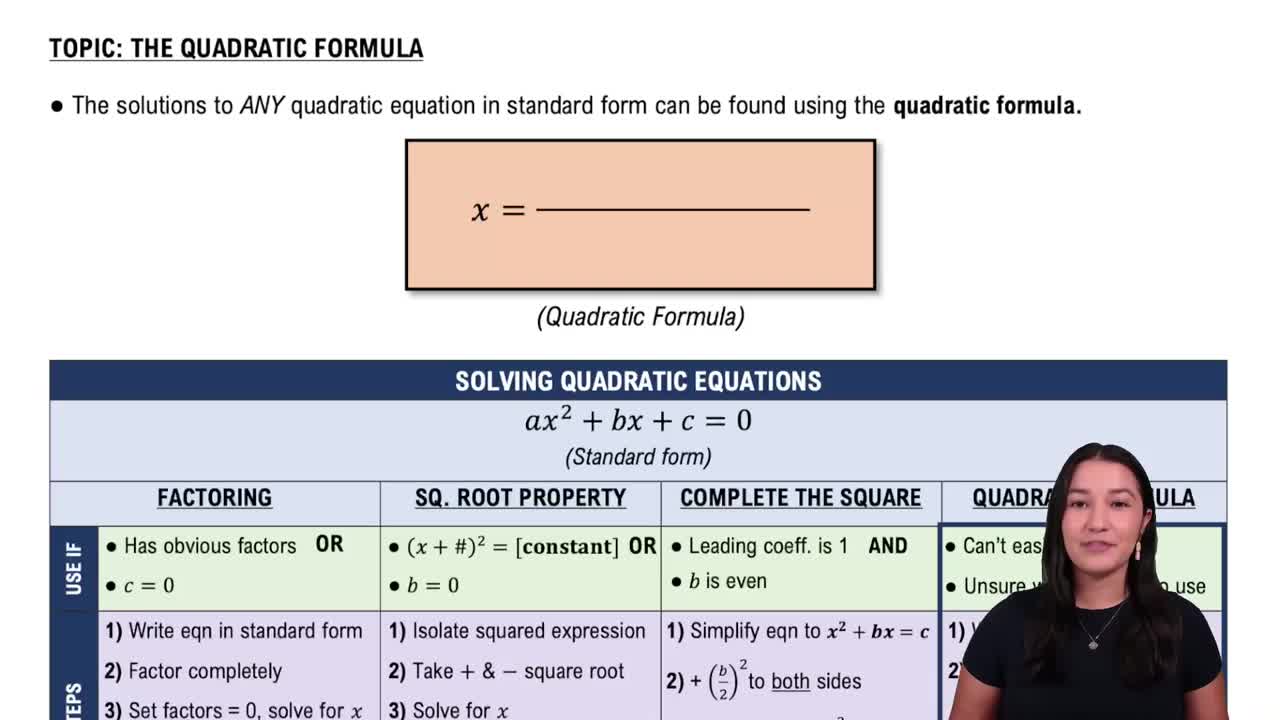Here are the essential concepts you must grasp in order to answer the question correctly.
Quadratic Functions
A quadratic function is a polynomial function of degree two, typically expressed in the form y = ax^2 + bx + c. The graph of a quadratic function is a parabola, which can open upwards or downwards depending on the sign of the coefficient 'a'. Understanding the shape and properties of parabolas is essential for graphing quadratic equations.
Recommended video:
Solving Quadratic Equations Using The Quadratic Formula
Vertex of a Parabola
The vertex of a parabola is the highest or lowest point on the graph, depending on whether it opens downwards or upwards. For the equation y = 9 - x^2, the vertex can be found at the point (0, 9), which is the maximum value of y. Identifying the vertex helps in sketching the graph accurately and understanding the function's behavior.
Recommended video:
Graphing Points
Graphing points involves plotting specific values of x and their corresponding y values on a coordinate plane. In this case, substituting x values from -3 to 3 into the equation y = 9 - x^2 allows us to find the corresponding y values, which can then be plotted to visualize the quadratic function. This process is crucial for accurately representing the function's graph.
Recommended video:
Graphing Equations of Two Variables by Plotting Points
 Verified step by step guidance
Verified step by step guidance Verified Solution
Verified Solution



 5:10m
5:10m